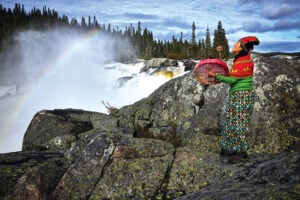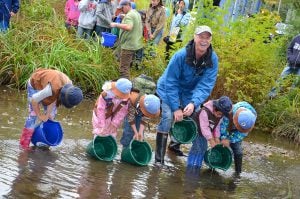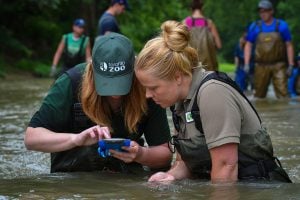If 2020 taught us anything, it is a new awareness of global interconnectivity. In the past year, a practically invisible organism, the SARS-CoV-2 virus, has not only killed millions around the world, but also wreaked economic hardship and societal change on a massive scale. If we are to prevail over the coronavirus, it will take global cooperation, trust in science and recognition of the importance of interconnectivity. Interconnectivity can present vulnerability as well as hope.
As my world of expeditionary travel shrunk and work projects fell away, I found myself turning inward to the relative safety and comfort of isolation. With the unexpected luxury of time, I learned about an endangered subaquatic fauna that supports an astonishing ecosystem with critical services to my local watershed. During visits to the Canadian Museum of Nature in Ottawa, I met with André Martel, a malacologist who studies freshwater mussels. After talking about the Ottawa River’s underwater world, I became part of his lab’s diving team. As the only cave diver in Martel’s lab, I shared information about freshwater mussels I observed thriving in Canada’s longest underwater cave system, located about 120 kilometres west of Ottawa. With guidance from Martel, I hope that my images and surveys will explain how a mostly overlooked animal is a sentinel species that can teach us about the freshwater food chain’s interconnectivity.
The native mussel species living inside the Gervais/Three Island Cave of the Ottawa River seem to be thriving in isolation despite their unique reproduction requirements. They cannot survive without the help of local fish living inside or passing through the caves, swimming in and out through swift currents. The sex life of a native unionid mussel is exceptionally complicated. A male ejects sperm that float downstream to a female. She releases fertilized eggs from her single ovary into specialized compartments of her gills called marsupia. There, the young develop into a microscopic, hinged, specialized larval form called glochidia.
Meanwhile, the female plain pocketbook (Lampsilus cardium) mussel grows a “lure” that protrudes from its shell in the shape of an eastern shiner (a small baitfish), complete with markings, fin-like structures and spots that look like eyes. It flexes the decoy to attract smallmouth bass. When a fish gets close, the mussel expels the glochidia, which snap onto the gills of an immature fish. After attaching to the fish’s gills, the glochidia encyst and remain inside for weeks or months, the fish’s hemolymph providing them with a food source. The juvenile host fish carries the parasitic mussel babies until they mature enough to excyst and bury themselves in the bottom, where they will further develop for a couple of years before re-emerging.
The relationship does not harm the young fish, but if the glochidia attach to an older fish, they will be expelled or rejected by the fish’s immunological defense system. The odds of completing this life cycle are slim and made even more unlikely in the face of stressors such as reducing the number of their host fish, water pollution, and siltation.
The hickorynut mussel, one of the species of native unionid mussels found inside the Gervais caves, is an endangered species. Its presumed host fish is the lake sturgeon. If we lose the sturgeon, we will likely lose the hickorynut mussels.
Martel’s work, and that of other malacologists, naturalists and volunteer divers, now reveals that the Ottawa River watershed is home to roughly 38 per cent of Canada’s mussels (21 of 55 species). Luckily, there are currently no invasive zebra or quagga mussels in a 141-kilometre-long stretch serving the cave passages near Westmeath.
Native mussels, our natural water filters, are imperiled by many things, including habitat loss, pollution, dams, viruses, bacteria and non-native species. These unappreciated animals offer remarkable ecosystem benefits beyond filtration, including as part of the natural food chain, a micro-habitat and a supporter of resilient nutrient cycles. A human-engineered equivalent would be neither cost-effective nor as efficient as the natural collaborations taking place in the Ottawa River.
By protecting these native species, we buy ourselves time to fully understand their value and potential to contribute to habitat improvement, sustainable food sources and environmental mitigation/sanitation.
Like the SARS-CoV-2 virus, it can be hard to understand what you cannot see. But the duality of global interconnectivity means that even as we witness a species’ decline, we can help. I hope that when we evaluate the lessons learned from a pandemic, we will be better prepared to engage in system-wide solutions for protecting precious habitat.
Want to teach your kids more about hickorynut mussels? See Ottawa Riverkeeper’s new children’s activity book here and the kid-friendly cartoon below.





